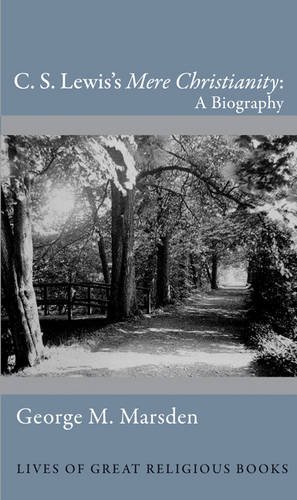A Brief Book Summary from Books At a Glance
By Steve West
Introduction
This book is part of Princeton University Press’ Lives of Great Religious Books series. Marsden explains the historical and biographical details that led to the production of Mere Christianity, as well as its reception and subsequent influence. He examines both the praise that it has received as well as the criticisms. Marsden provides an analysis as to why Mere Christianity continues to be one of the most popular and influential Christian books in the world.
Table of Contents
Introduction
Chapter 1 War Service
Chapter 2 Broadcast Talks
Chapter 3 Loved or Hated
Chapter 4 A Classic as Afterthought
Chapter 5 Into the Evangelical Orbit
Chapter 6 Many-Sided Mere Christianity
Chapter 7 Critiques
Chapter 8 The Lasting Vitality of Mere Christianity
Book Summary
Introduction
The influence of C. S. Lewis has never been greater. Mere Christianity has sold more than 3.5 million copies in English alone since 2001. It has been translated into at least thirty-six languages. Mere Christianity’s biggest influence, however, is in the United States. Amazingly, this book did not start out as a book: it started out as a series of religious broadcasts on the BBC during World War Two. The book has been read or rejected by so many millions of people that its full impact and story can never be known. Lewis was born in 1898, and his mother died ten years later. He ended up in Oxford after WWI, and excelled as a student. The War ended Lewis’s faith in scientific progress (he had already lost religious faith as a teenager). He came to see that chronological snobbery blinded him to potential truth and beauty in older ideas. As an avid reader and thinker, Lewis discovered this truth and beauty in the writings of older Christian authors. Over time, Lewis moved away from materialism and accepted idealism, but this led to theism. The historicity of the Gospels seemed unlike other religious tales, but they also had the right mythological quality of archetypal resonance. Through his friends, Lewis came to believe that the gospel was a true myth; it was historical fact and mythological in significance. Thus, Lewis found in Christianity the combination of rational rigor and emotional satisfaction he sought. It was not long before Lewis was beginning to write about Christianity, both in works of fiction and nonfiction.
Chapter One: War Service
Unless we have lived through it, it is impossible to imagine the trauma, loss, pain, and fear that blanketed England during the Luftwaffe bombings. Tens of thousands were injured or killed, and the material loss was staggering. Nazi invasion seemed like a real possibility, and many found themselves in despair. It was in this environment that the BBC reached out to Lewis and proposed that he record a religious broadcast. The BBC was founded with a Christian dimension, and propagating the Christian religion was part of its purpose. The British public, however, were increasingly removed from engagement with Christianity. Lewis was well aware of the nominal nature of Britain’s Christianity, and he thought that the best way of reaching people was to point them to morality and guilt. This was a necessary first step to bring them to Christian doctrine. Lewis had an excellent voice for radio. He was also enlisted to travel around and give religious talks to the RAF. Lewis learned that educated people sometimes understood terms differently than the uneducated. Religious concepts and vocabulary needed to be translated into common terms in order to be understood. People had no concept of sin, but Lewis thought they could be shown guilt and objective morality, which made the existence of a moral Law-giver probable.
Chapter Two: Broadcast Talks
Lewis initially gave a series of four broadcasts that moved from natural law and morality to the Law-giver and Christ. It was only in the last talk that he moved to Christianity. Since his talks drew an audience, the BBC asked Lewis to record another series, this time on basic Christian beliefs. It was important to Lewis that these talks say nothing of a sectarian nature, so he sent out drafts to friends from different theological backgrounds. What he wanted was to represent not a party line, but mere Christianity. Many were struck by the clarity and simplicity of Lewis’ material, even though it was not oversimplified or watered down. He not only presented and illustrated Christian doctrines, he attempted to show that liberal Christianity failed to make sense, as did atheism. Once again, his talks drew a large audience, and he then prepared a third set of talks on Christian Behaviour. Building on the foundation that he had already laid, this series dealt specifically with Christian moral. . .
[To continue reading this summary, please see below....]The remainder of this article is premium content. Become a member to continue reading.
Already have an account? Sign In
